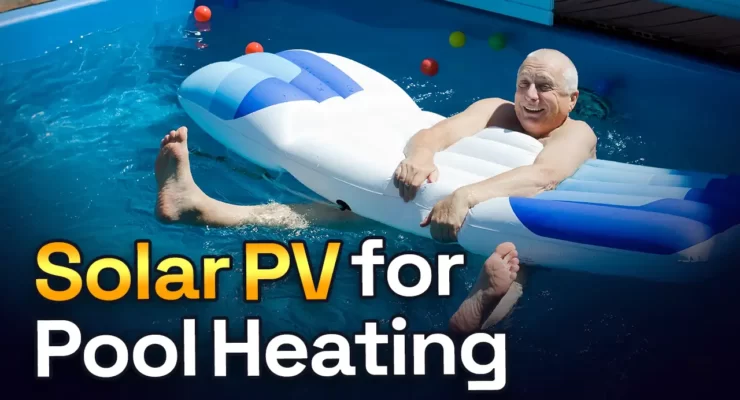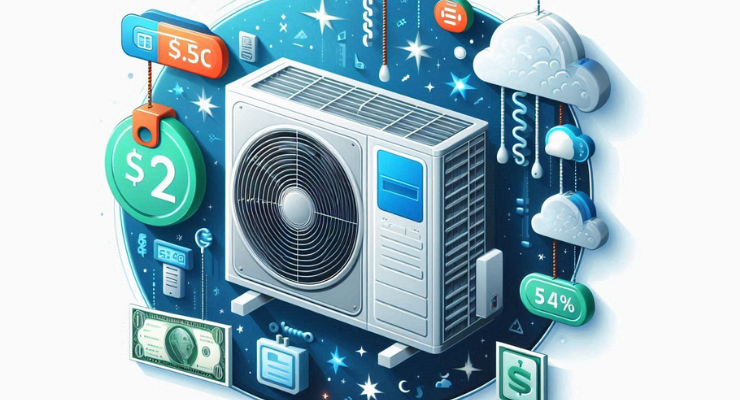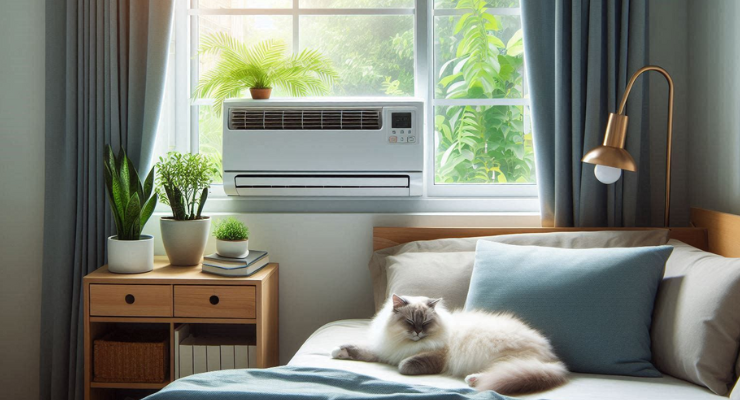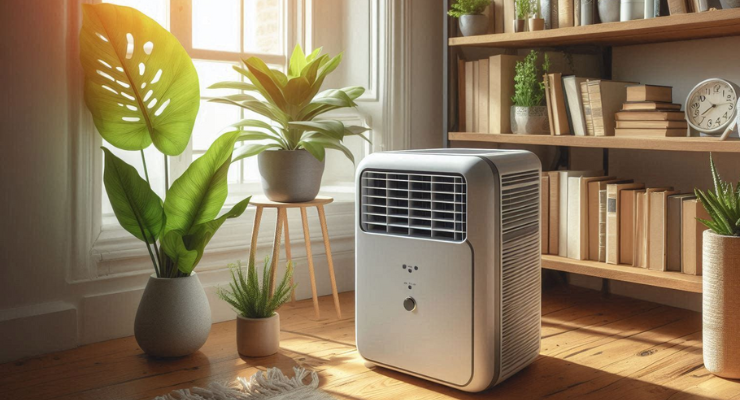Fast read
Solar heating for pools has traditionally been done by pumping water through rooftop tubes heated by the sun.
While this method uses large roof areas, it's nowadays viewed as inefficient when the same space could host solar panels producing electricity for various uses, including pool heating via an electric heat pump.
Currently, the most efficient method is using a solar electricity-powered hot water heat pump. Solar rings and squares, as well as solar pool covers, offer alternative ways to heat your pool.
How does a solar pool heater work and is it efficient?
Traditionally a solar pool heater was undertaken via installing specific tubing or matting on a nearby roof. These tubes then had water pumped through them, and the sun’s heat would heat the water, which would then be returned to the pool and increase its temperature.
However, studies indicate that this isn’t the most efficient utilisation of a large roof space. Nowadays, this space could be better utilised for installing local solar panels to generate electricity. That renewable electricity can then power a home with many appliances, including pool pumps and even pool heating, via an electric heat pump.
An alternative popular option for pool heating has been via gas hot water heating. However, with the increasing cost of natural gas, this has become a costly method to heat pool water and is declining in popularity in all households other than the ones where one has more money than sense.
Solar hot water heat pumps
One option, but likely not the top option, is to buy a solar pool pump and still keep the solar hot water system matting or tube heating. Installing a DC-powered solar pump to move the water can achieve energy savings. The pump, powered by sunlight, moves the hot water to the roof, where it heats within the matting or tubes using solar energy
This proposal will save some grid electricity as we now power the pump with solar. It nevertheless does not overcome the need to use valuable roof space to heat the water. So this method is reducing in popularity fast.
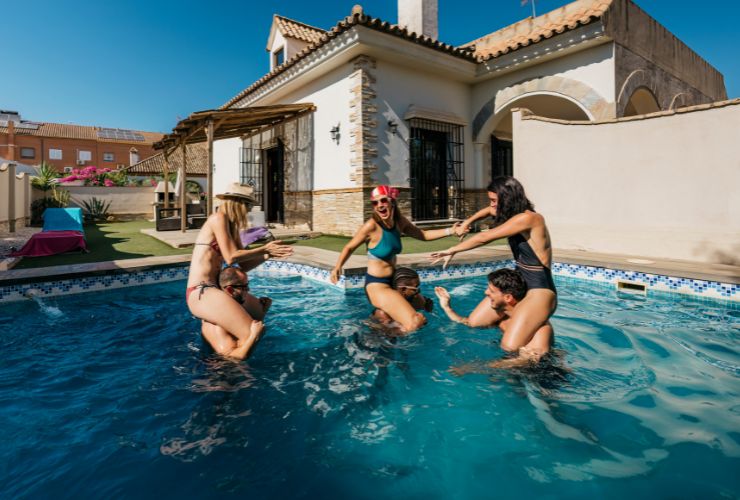
Heat pumps and solar can heat a pool efficiently
The most efficient way to heat pool hot water is using a solar pool heater. The heat pump runs on electricity but efficiently extracts heat from the surrounding air, transferring it via a condenser to heat the water.
Rather than using electricity from the grid, the electricity can be generated from solar panels to power the heat pump with cheap solar. Also, heat pumps are highly efficient and use less electricity.
Also, several other ways that you can heat your pool with solar, including:
- Solar rings and squares
- Solar pool covers
Solar rings and squares
Solar rings and squares, like solar pool covers, are separate floating devices that harness solar energy. They consist of a lightweight polymer with an air-filled chamber that absorbs sunlight and transfers heat to the water. Installing and removing these devices is easy, and they can be relocated to maximise sun exposure.
Solar pool covers
Solar pool covers, also known as solar blankets or pool blankets, are an inexpensive and simple way to heat your pool. These coverings are constructed of a robust and UV-resistant material that floats on the water’s surface. They function by absorbing the sun’s heat and reducing evaporation, thereby preserving heat in the pool. Solar coverings can enhance the water temperature by a few degrees while also reducing heat loss overnight.
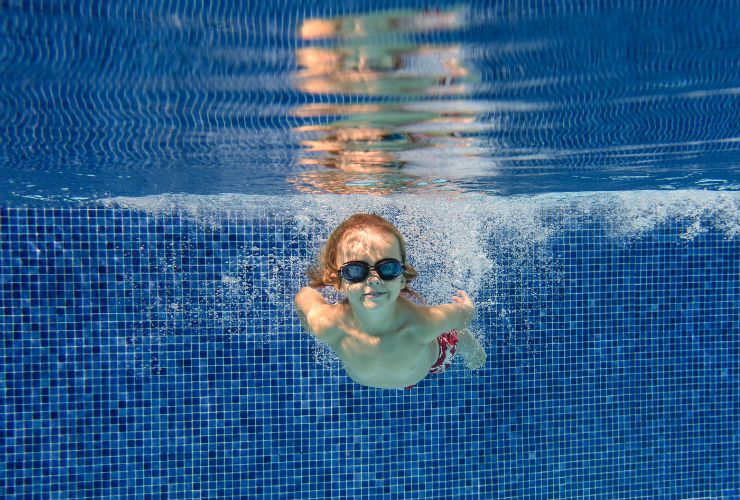
Pool size and environment
The size and number of solar panels or devices you need to heat your pool depend on the dimensions of your pool and your geographical location. If you have a sizable pool or live in a frigid location, you might need more robust solar heating.
No one-size-fits-all solution exists for heating your pool with solar energy. The size of your pool matters because bigger pools need more solar energy to warm up properly. Also, if you live in a chilly area, you’ll likely need a bigger solar heating system to make up for the extra heat loss.
By considering your pool’s size and where you live, you can figure out the best solar heating setup to keep your pool nice and warm all season long. Talking to a solar expert is a good idea to help you choose the right system for your needs.
Direction and sun exposure
The direction and sun exposure of your pool and surrounding region are critical for maximising solar heating effectiveness. Avoid shade from adjacent trees, buildings, or other impediments to ensure that the solar panels or other heating equipment receive adequate sunshine throughout the day.
Pool insulation
Improving the insulation of your pool will assist in retaining the heat generated by solar energy. Consider using a pool cover and insulating pool walls and floors during the build or when not in use to decrease heat loss.
Using solar energy to heat your pool is both environmentally beneficial and cost-effective. When deciding on the best solar pool heating method, consider your pool’s size, climate circumstances, sun exposure, and poor insulation. You may enjoy warm pool water and extend your swimming season by utilising sun power with the correct design and installation.
